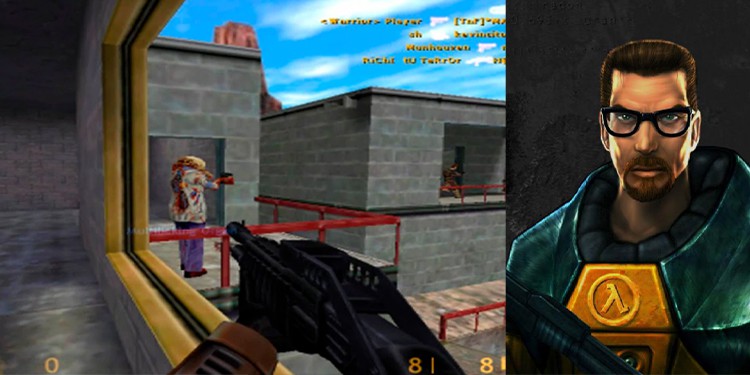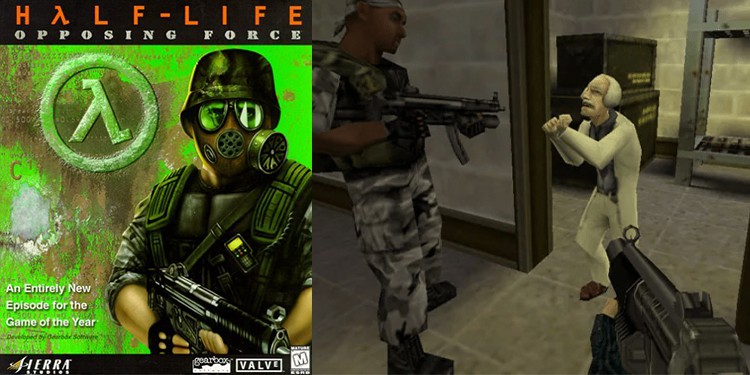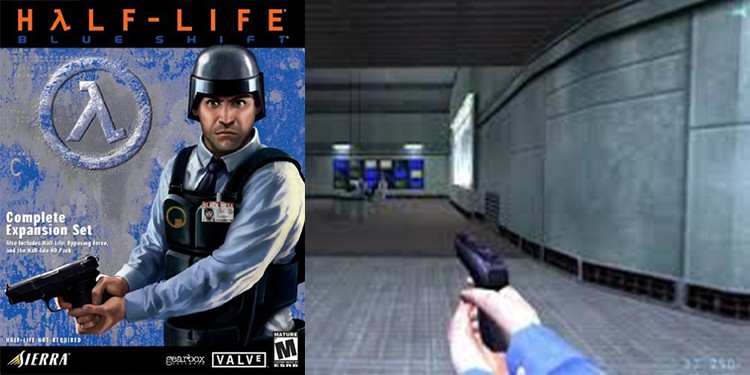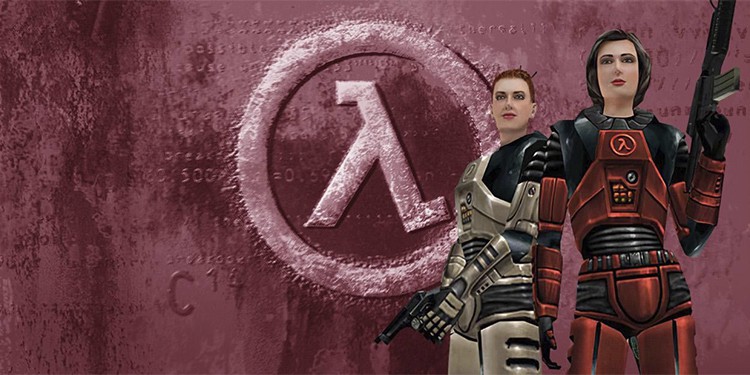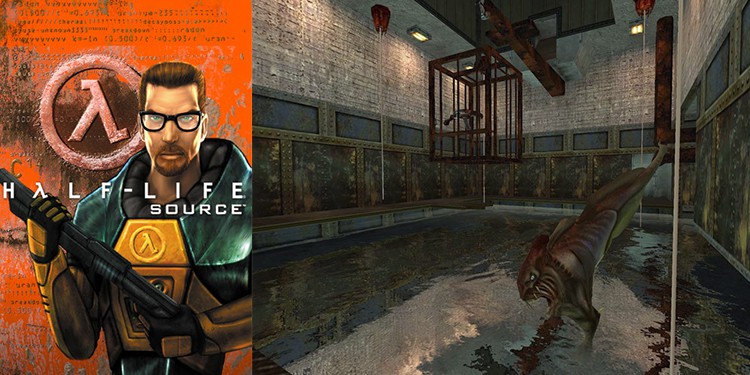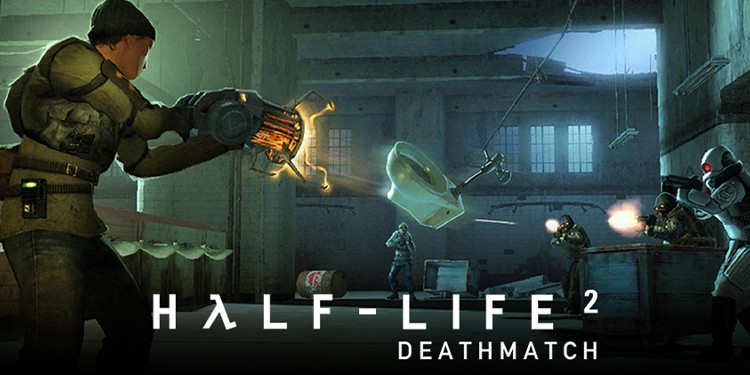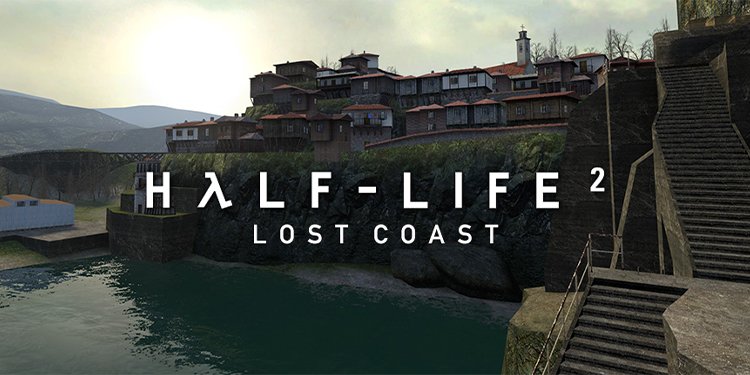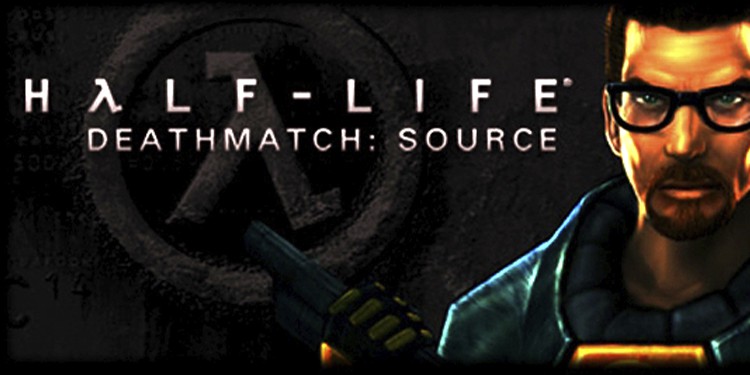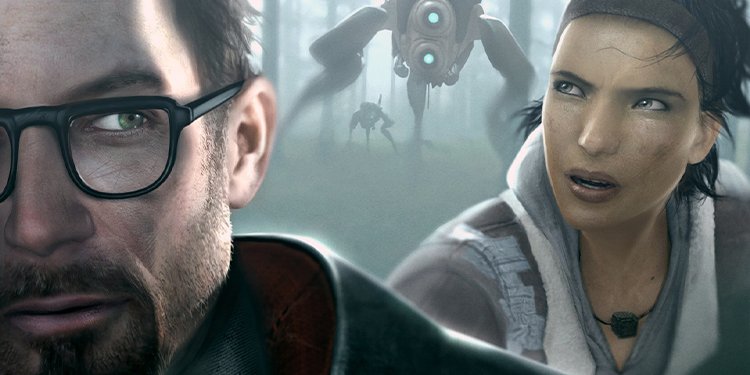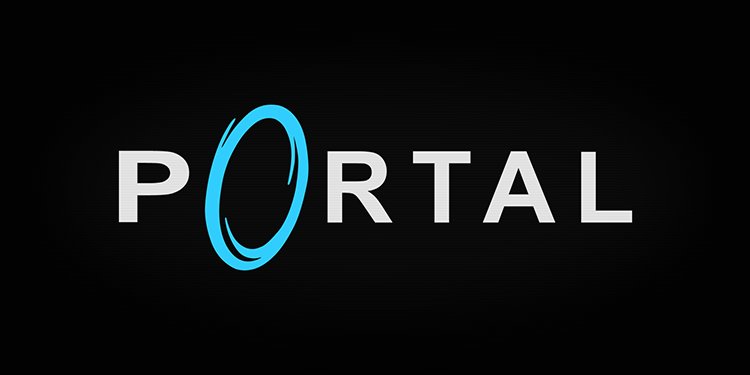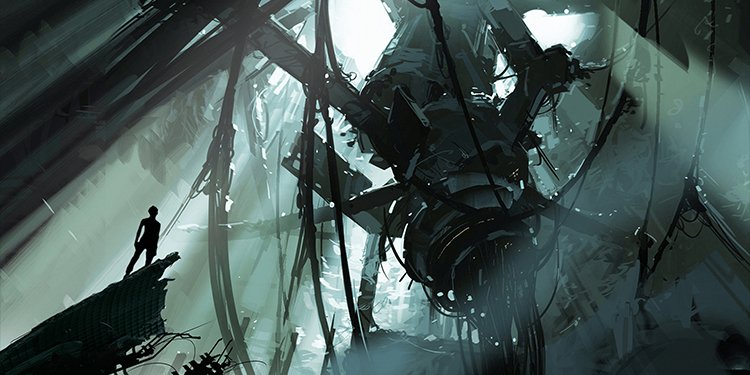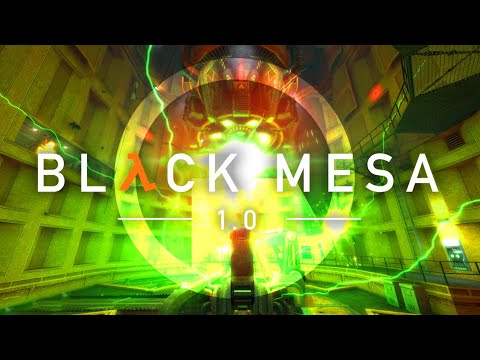Before the 1998 debut, Valve was a small indie developer. After their successful FPS hit, they became the massive behemoth they are today. Therefore, they changed the landscape forever by launching Steam, the biggest video-game storefront. You’ve probably heard about Half-Life games before. If anything, you saw or played Half-Life: Alyx hailed as the best 2020 VR title. The thing is, they’re probably more entries than you realize, including a great third-party remake. Also, I couldn’t stress enough how good Half-Life games are. Perhaps you already know this. But if you’re a newcomer, give them a try.
The Half-Life series
Half-Life debuted in 1998 to introduce the many formulas in the series. At the core, Valve’s franchise is an FPS experience that relies on environmental storytelling, dynamic environments, and varying scenarios. The name of the game is due to how it works. Players spend part of the playthrough in underground locations and the rest on surface locations. Underground settings add horror elements. Imagine a dark sewer filled with dormant zombie-like aliens at the corner. You have a flashlight in your suit, but it can run out of energy at any time. Surface locations are different. It offers guns-blazing action against aliens, soldiers, ships, vehicles, and everything in between. The next core element is the protagonist, Gordon Freeman. He begins as a scientist for the Black Mesa laboratory. A failed experiment opens up a portal to another dimension, and you’re one of the only survivors. Nevertheless, Gordon Freeman doesn’t speak. As the ultimate irony, he’s not free: he obeys everything others tell him to do. His loyalties come into question frequently by the presence of the mysterious “G-Man,” a man in a suit that comes and goes, capable of using Freeman to do his bidding. We’ll continue exploring the plot as we go through the series. For now, you should know it’s a story of free will, corruption, humanity, ethics, and enslavement set within a human vs. alien war. Either way, the next element we’re discussing is the HEV suit. It protects Freeman from environmental damage like toxic wastes and grants HP and shield. Moreover, it comes with an AI voice and a myriad of sound effects that are hard to forget. Another core element is how the story comes through. Instead of standard cinematic cuts, the relevant plot points come through scripted events. That also means the narrative flows through from beginning to the end, and the only loading screens connect one chapter to the next. Lastly, there’s the arsenal. It’s a wide arsenal, with a combination of melee weapons, pistols, assault rifles, sci-fi laser beams, and alien weapons. On PC, for example, you carry weapons on numbers 1-to-9, similar to Doom. That said, there’re no RPG elements and no choices. These are linear games where you go from A to B, and the challenge is surviving.
Every Half-Life Game in Order by Release Date
Even though there’re only three main Half-Life entries, the grand total is 15 games. On top of the main games, there’re six expansions, two remasters, three spin-offs, and one relevant third-party remake.
Half – Life – 1998
The 1998 game debuted for Linux, Windows, and macOS. In 2002, it became available for PlayStation 2. Notably, Sierra Studios was the publisher; Valve was still in its infancy. Half-Life is an FPS title that mixes sci-fi, survival horror, and techno-thriller. By the latter term, I mean its strong suspense is explained by science. The plot follows Gordon Freeman, a Black Mesa researcher. Black Mesa is a secret underground lab in New Mexico; it’s inspired by Area 51 tales. Then, the game takes ideas from Resident Evil, Doom, Quake, and The Mist novel by Stephen King. The story starts on a regular workday. After a long introduction where you get to see the facilities, you go about your tasks, put on the HEV suit, and head on towards an experiment. However, Freeman accidentally opens a portal to Xen, a parallel world populated by alien creatures. The most common are the Vortigaunts, otherwise known as “slaves.” An alien horde flooded Black Mesa and murdered the personnel. Freeman must open his way across rumble and corpses to flee the underground layer, return to the surface, and ask for help. Over time, though, he’ll realize he needs to close the portal before leaving for good, taking the silent hero straight to Xen for a final battle. Along the way, Gordon faces increasingly challenging and frightening situations. Enemies include alien creatures, Vortigaunts, and soldiers erasing all evidence of the accident. The story goes across 18 chapters plus an epilogue. Every chapter is exceedingly different from the last. Often, each segment requires you to complete a specific task on a linear level. You may need to backtrack multiple times to solve a single large puzzle. Then, the activities you require to solve these single puzzles include finding pieces, turning on switches, closing hatches, clearing paths, finding allies, and similar. The story comes with environmental storytelling and by your allied scientists and guards. Even though the game was a technological and graphical marvel, most NPCs have the same character model. Lastly, the G-Man seldom appears mysteriously to observe Freeman’s actions. After Freeman’s final battle in Xen by the end of the game, he comes back with a proposal to the protagonist. Players may choose to decline (death) or accept. Accepting puts Freeman in “hibernation” until G-Man requires his services again.
Half-Life: Opposing Force – 1999 (Expansion)
Opposing Force is the first expansion for Half-Life. It debuted in 1999 for Windows. Later on, it became available for Linux and macOSX. Gearbox Software and Valve are the developers, and, notably, Gearbox Software is Borderlands‘ creator. Opposing Force is a parallel story from the perspective of a U.S. Marine, an enemy faction during the original game. The protagonist is Adrian Shephard, and his job is neutralizing the Black Mesa Research Facility after the alien invasion. However, he finds out a second alien race defeats the Marines and their Black Operations unit. Despite his initial mission of erasing all evidence and survivors, Shepard decides to ally himself with the survivor to defeat the “Race X” invasion. The G-Man also appears by the end of the game and takes Shepard away for further “inspection.” The title follows the same gameplay mechanics as the first game. U.S. Marines can assist the player with support fire, healing, or removing obstacles for novelties. Also, the game introduces new enemies and weapons.
Half-Life: Blue Shift – 2001 (Expansion)
Blue Shift is the next expansion of the sci-fi FPS. Valve and Gearbox Software released it under Sierra On-Line for Windows in 2001. The game returns to the original setting and tells the story from the perspective of a Black Mesa security guard. The protagonist is Barney Calhoun (previously seen on Half-Life 1). Barney’s job is to protect the research personnel and equipment. After the accident, he works with Dr. Rosenberg to evacuate the survivors. The gameplay delivers the same mechanics as before while upgrading the graphics. Moreover, it has a bigger emphasis on puzzles and less on the action. Also, as in the previous expansion, other NPCs like guards and scientists can assist.
Half-Life: Decay – 2001 (Expansion)
Decay is a PlayStation 2-only expansion. It’s a 2001 co-op story mode that expands upon the Half-Life events. The story comes through two flame Black Mesa scientists. Through split-screen gameplay, they go through a series of missions and puzzles to fight against the alien invasion. That said, there’s no way to play Decay as a single-player, and it’s also not available on Steam. In fact, gameplay requires good cooperation. For example, one player closes a hatch while the other defends a position. The game has many enemies and action-set pieces but limited weaponry. Also, it’s the only Half-Life game so far to feature isolated missions instead of a single narrative. When players complete a task, the game grants a score and opens up the next job. Even a special reward allows users to play Decay or Half-Life as a Vortigaunt. That said, the PlayStation 2 Half-Life version came out with a PvP multiplayer mode. It opens a split-screen 1v1 experience on multiple maps, both players using an HEV suit. It was the first Half-Life PvP game mode.
Half-Life: Source – 2004 (Remaster)
Half-Life: Source debuted in 2004 for Windows, macOS, and Linux. It upgrades the 1999 GotY game with Valve’s new engine, Source. Thus, the game comes as a digital remaster, with increased performance, graphics, physics, sound effects, and character models.
Half-Life 2 – 2004
Half-Life 2 debuted in 2004 for Windows, macOS X, Linux, Xbox, Xbox 360, and PS3. The sequel expands the original mechanics 20 years after the previous events. Gordon Freeman awakens from his slumber. Soon, he discovers “The Combine,” a multitude of allied alien races, have taken over the Earth. Players know The Combine as the Race X on Opposing Force. He joins the resistance under Barney’s request and behind a fight to push back the alien invasion. Soon, Gordon Freeman meets an old Black Mesa employee, Eli. Eli and his daughter Alyx become Freeman’s top allies against the Combine. The game ends when Gordon discovers a human plot to conquer Earth with the help of the Combine. When he explodes an all-important base, the G-Man reappears and takes Gordon away. As I said, though, I can’t stress enough how good Half-Life 2 is. We’ve said before it could be the best game of all time. Valve’s president Gabe Newell had the goal of redefining the FPS genre. So, he focused on a physics system that allows players to interact with almost anything in the world. This works mostly through the “Gravity Gun,” a weapon that can push and pull almost anything. You can use it for fighting, puzzle-solving, or having fun. Secondly, the player himself can also pick up multiple things in the world, even toilet paper. On top of the great physics engine, the game also includes hundreds of NPC interactions. In fact, many segments in the game are about fighting alongside resistance players against Combine soldiers and machines. Elsewhere, the game retains its changing pace. A horror chapter on an abandoned city may transition into an all-out battle on the highway. Moreover, although linear, every level offers the player places to explore for extra ammo, health, energy, and sights. That said, it retains the HEV suit with its mechanics and sound effects. It also has environmental hazards, similar weapons, and similar performance. As the first game in the series, Half-Life 2 was also a marvel in visuals and mechanics.
Half-Life 2: Deathmatch – 2004 (Spin-off)
Deathmatch debuted in 2004 for Windows, Linux, and macOSX. It’s a multiplayer FPS within the Half-Life 2 universe. The game uses HL2’s physics to deliver team-based PvP battles. The two teams are the Resistance and the Combine.
Half-Life 2: Lost Coast – 2005 (Expansion)
Lost Coast is a DLC that debuted in 2005 for Windows. Valve’s original plan was to release Lost Coast as a Half-Life 2 chapter. However, they released it as a standalone tech showcase. In essence, it introduces High Dynamic Range lighting to Valve’s Source engine, so players can simply explore the area in first-person to bask in the visuals.
Half-Life 2: Episode One – 2006 (Expansion)
The first campaign expansion debuted in 2006 for Xbox, PlayStation 3, Windows, macOS X, and Linux. It upgraded the Source engine for even better graphics and performance. Gordon Freeman is back on City 17 alongside Alyx Vance. The two heroes must escape the area before an explosion consumes the city. This shorter game delivers the perfect mix of puzzles, horror, fast-paced action, and storytelling of previous entries. Moreover, it focuses on the relationship between Alyx and her AI companion, Dog. Lastly, the previously enslaved race -the Vortigaunts- made a comeback as the unforeseen allies.
Half-Life Deathmatch: Source – 2006 (Remaster)
Deathmatch: Source debuted in 2006 for Windows, Linux, and macOSX. It recreates the PlayStation 2 split-screen PvP for PC. The recreation came with the Source engine. So, this is a remaster, just like the Source version above.
Half-Life 2: Episode Two – 2007 (Expansion)
Episode 2 debuted in 2007 for Xbox 360, PlayStation 3, Windows, Linux, and macOSX. Gordon Freeman travels to the mountains around City 17 to find a resistance base. He’s traveling alongside Alyx Vance. The journey includes traversing various vehicles for mounted combat and massive action set pieces. Other than that, it retains the Half-Life formula: FPS, puzzles, and scripted narrative. Nevertheless, it adds expansive areas, less linear sequences, and exploration opportunities. Episode 2 ended on a cliffhanger, though, and we’re not certain if Valve will conclude the story. In essence, Alyx and Gordon flee City 17 and the base on different trains, right before a nuclear reactor explosion. The shockwave derails the train, and Gordon’s future is unknown.
Portal – 2007 (Spin-Off)
Portal debuted in 2007 for Windows, Xbox 460, and PlayStation 3. Fans first saw it as part of Valve’s The Orange Box bundle. The game presents a series of puzzles players must solve using a teleporting gun. In essence, the weapon can open portals to travel across a massive underground science facility. The protagonist is Chell. An artificial intelligence, GLaDOS, taunts her to complete the teleporting experiment by promising cake as a reward. PSo, Portal thrives on a quirky cast of characters, a unique physics engine, and interacting with anything in the environment to solve the game.
Portal 2 – 2011 (Spin-Off)
Portal 2 debuted in 2011 for Windows, macOS X, PS3, and Xbox 360. It’s a direct sequel to Portal, and it also lives within the Half-Life universe. The game features similar mechanics revolving around the Portal Gun. Chell navigates the Aperture Science Enrichment Center during its reconstruction by GLaDOS. There’s also a co-op mode where two players control two robots (Atlas and P-Body) across the lab.
Half-Life: Alyx – 2020
Alyx debuted in 2020. It’s a VR FPS for Windows, supporting any VR headset for PC. It’s not a sequel to Episode Two, though. Instead, it sets the events between Half-Life and Half-Life 2. The protagonist is Alyx Vance, and the mission is rescuing her father, Eli, from a Combine base. The title players are similar to previous Half-Life entries, albeit with the limitations of VR gameplay. Notably, traverse relies on pointing towards a direction. Either way, the Gravity Gun makes a return for a massive interaction with the environment. Similarly, Alyx’s hands can pick up almost anything. Moreover, players require specific hand gestures for different interactions. This includes reloading guns, healing up at health stations, launching grenades, shooting, moving, using the Gravity Gun, etc. And as before, the game adds combat, exploration-survival horror, and puzzles on its linear path. Half-Life: Alyx debuted to critical and fan acclaim. Its narrative, acting, graphics, atmosphere, settings, sound effects, and gameplay made it the first VR hit.
Black Mesa – 2020 (Third-Party Remake)
There’re many third-party Half-Life mods, upgrades, ports, and whatnot. There’s none like Black Mesa, though, so we wanted to take hits one seriously as part of the Half-Life series. Black Mesa is a remake of the original game. A group of fans and developers created the title without Valve’s help but under Valve’s permission. As before, Gordon Freeman plays through the Black Mesa Research facility. The storyline follows a reimagining of the original plot with new levels, expanded areas, and increased challenges. In particular, the upgrades to the Xen levels are absolutely massive. They expanded the areas, added more enemies, details, and puzzles. Everything comes together with gorgeous graphics, HD audio, and the same sound effects you remember. It offers hours of original gameplay fans will love and the opportunity for newcomers to experience Half-Life for the first time in modern graphics. Lastly, the title also includes 10 maps in its multiplayer mode, plus Steam Workshop support for mods.
Every Half-Life Game in Chronological Order
Half-Life – 1998Half-Life: Opposing Force – 1999 (expansion)Half-Life: Blue Shift – 2001 (expansion)Half-Life: Decay – 2001 (expansion)Half-Life: Source – 2004 (remaster)Half-Life 2 – 2004Half-Life 2: Deathmatch – 2004 (spin-off)Half-Life 2: Lost Coast – 2005 (expansion)Half-Life 2: Episode One – 2006 (expansion)Half-Life Deathmatch: Source – 2006 (remaster)Half-Life 2: Episode Two – 2007 (expansion)Portal – 2007 (spin-off)Portal 2 – 2011 (spin-off)Half-Life: Alyx – 2020Black Mesa – 2020 (third-party remake)
What Are the Half-Life Spin-off Series?
After Half-Life: Source introduced the Source game engine, Valve took their chances on the multiplayer PvP segment. So, they released Counter-Strike in 2000 for Windows. It spanned a long-running series with eight games. The other offspring is Valve’s Day of Defeat. Using the GoldSrc game engine, it debuted in 2003 for WIndows. It’s a multiplayer FPS set in WW2, but it has no sequel.
Do I Need to Play Half-Life Games in Order?
You don’t need to play Half-Life to understand Half-Life 2. However, you definitely need to play Half-Life 2 in order, and by that, I mean it’s episodes. Then, consider Alyx as an option for die-hard fans. Lastly, Half-Life’s expansions would be for those left hungry after playing the original game.

